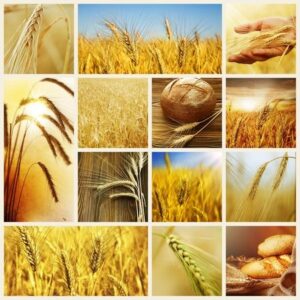GMO Wheat
While many people have heard the term “GMO,” some do not know what it really means. The acronym GMO stands for genetically modified organism. There has been plenty of controversy surrounding GMO wheat and other GMO foods, since many claim that they are unsafe to consume and negatively impact the planet. In fact, it is illegal to grow GMO wheat in Canada and the United States.
Wheat is one of the most widely consumed crops on our planet. It is used in bread,  noodles, cereal, beer and several other products. Unfortunately, the supply of wheat can’t keep pace with the ever-expanding number of humans. Some believe that genetically modified wheat is the solution, since massive amounts can be grown in a short period of time compared to traditional wheat. Here’s a closer look at the pros and cons of this type of wheat.
noodles, cereal, beer and several other products. Unfortunately, the supply of wheat can’t keep pace with the ever-expanding number of humans. Some believe that genetically modified wheat is the solution, since massive amounts can be grown in a short period of time compared to traditional wheat. Here’s a closer look at the pros and cons of this type of wheat.
Pros
GMO wheat can be grown in large volumes, since it is resistant to infections and parasites, which are major threats to conventional wheat. Proponents argue that we should opt to devote our limited farmland to this type of wheat, since it is highly efficient compared to relatively slow-growing traditional wheat.
Some argue that genetically modified wheat is of higher quality because it carries extra nutrients that boost the crop’s nutritional value. Scientists alter wheat’s genetics to make it much healthier to consume. It is also worth noting that this type of wheat can withstand some severe environmental conditions, including brutal cold spells and drought.
Cons
Humanity has yet to experience the long-term results of genetically modified wheat consumption, leading opponents to argue that it is potentially dangerous to human health. This type of wheat might have a negative impact on consumers’ bodies, but the real consequences are still unclear. Opponents believe that genetically modified wheat compromises antibiotic resistance and even affects allergies.
Those against GMO wheat also believe that it harms the environment. Arguments pertaining to GMO wheat’s negative environmental impact are extensive. Some state that this wheat causes a decline in biodiversity where a single crop emerges into dominance. Others say it is responsible for cross-pollination in which other crops are forcefully replaced.
There are also social consequences to genetically modifying wheat. Since improvements in GMO wheat are expensive to implement at this point, only wealthy farmers are able to take the GMO route.
Contact Barr Ag to get more information on any or our crops including Alfalfa and Timothy Hays, Mixed Hay, Canadian Grains and Pulse corps.



